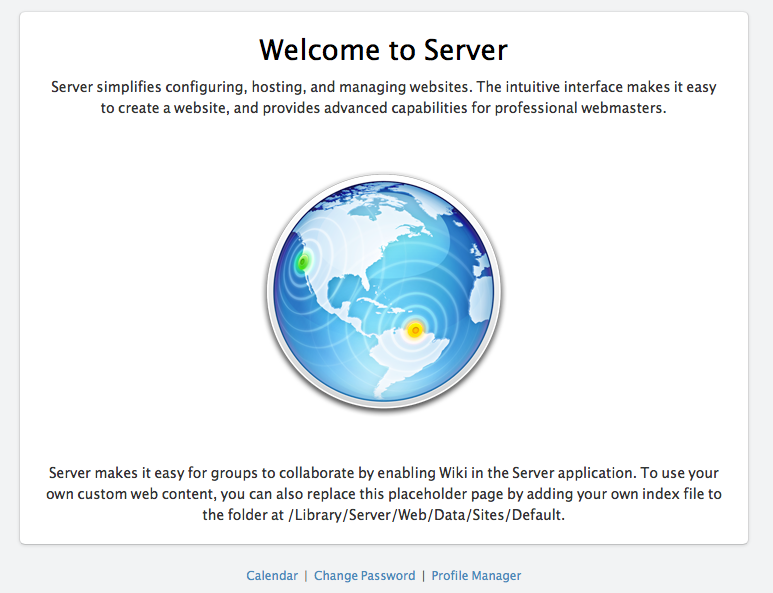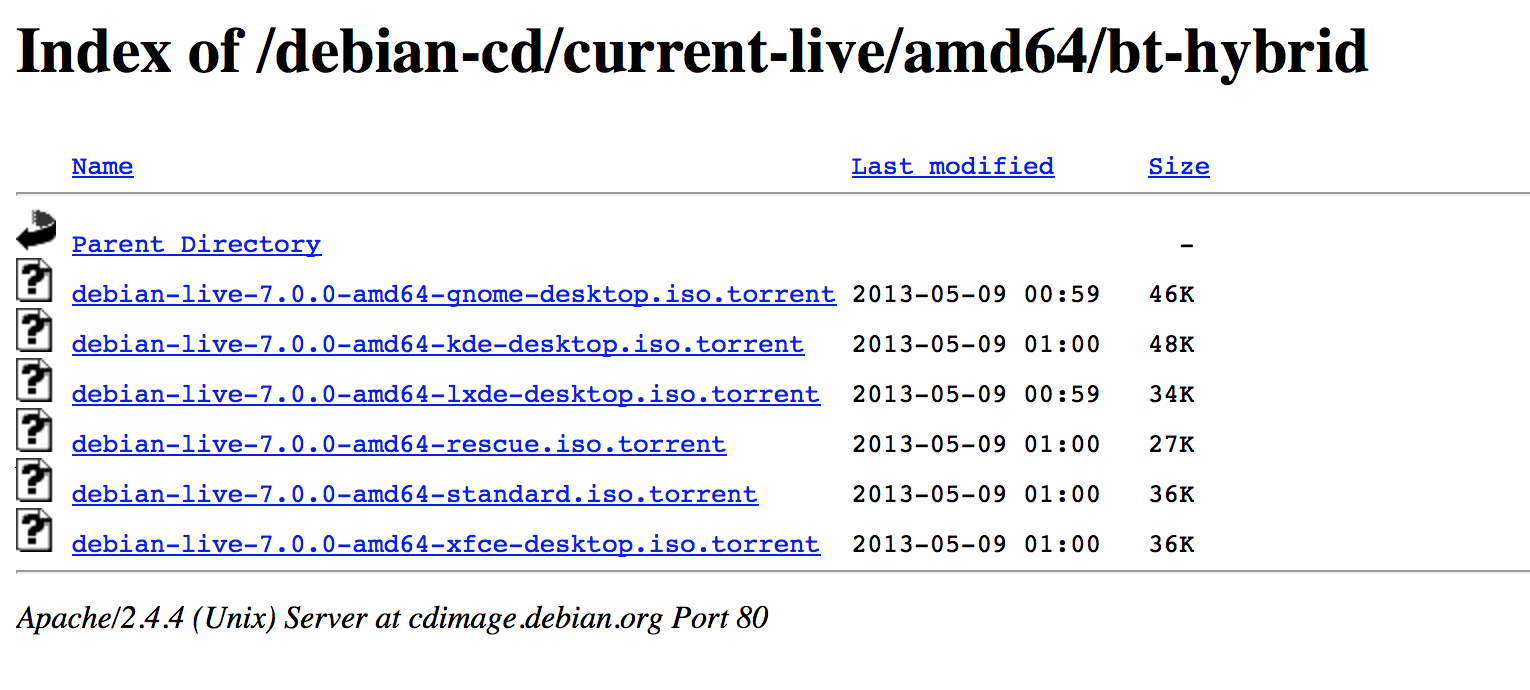Out of the box, Mac OS X Server's (10.8+) comes with
quite a bit of configuration. The base configuration file should be located at
/Library/Server/Web/Config/apache2/httpd_server_app.conf. This sets up the core apache configuration, but it also contain includes to other .conf files which provide further options. For your purposes, you are going to be interested in the configuration files located in
/Library/Server/Web/Config/apache2/sites/. There should be a file called
0000_any_80_.conf. This contain the VirtualHost configuration for *:80, which means any listening interface port 80.
If you look inside this file, you should see something like:
Code:
<VirtualHost *:80>
ServerAdmin admin@example.com
DocumentRoot "/Library/Server/Web/Data/Sites/Default"
DirectoryIndex index.html index.php default.html
CustomLog "/var/log/apache2/access_log" combinedvhost
ErrorLog "/var/log/apache2/error_log"
<IfModule mod_ssl.c>
SSLEngine Off
SSLCipherSuite "ALL:!aNULL:!ADH:!eNULL:!LOW:!EXP:RC4+RSA:+HIGH:+MEDIUM"
SSLProtocol -ALL +SSLv3 +TLSv1
SSLProxyEngine On
SSLProxyProtocol -ALL +SSLv3 +TLSv1
</IfModule>
<Directory "/Library/Server/Web/Data/Sites/Default">
Options All -Indexes -ExecCGI -Includes +MultiViews
AllowOverride None
<IfModule mod_dav.c>
DAV Off
</IfModule>
<IfDefine !WEBSERVICE_ON>
Deny from all
ErrorDocument 403 /customerror/websitesoff403.html
</IfDefine>
</Directory>
ProxyPass /__collabd/streams/activity balancer://balancer-group-webapp-com.apple.webapp.collabd--__collabd-streams-activity
...
</VirtualHost>
You can see that the document root is
/Library/Server/Web/Data/Sites/Default, and that directory has some options set for it. One of those options is
-Indexes which
disables the generation of auto-indexes when a suitable index specified by
DirectoryIndex cannot be found. If you remove
-Indexes and restart apache, you should find that the document root will return a directory listing when you access your web server. You could also change the document root to point somewhere else; I
strongly advise against pointing it at someplace like "/" or "/Users/".
![rvhpw9.png]()
![275e1.png]()



